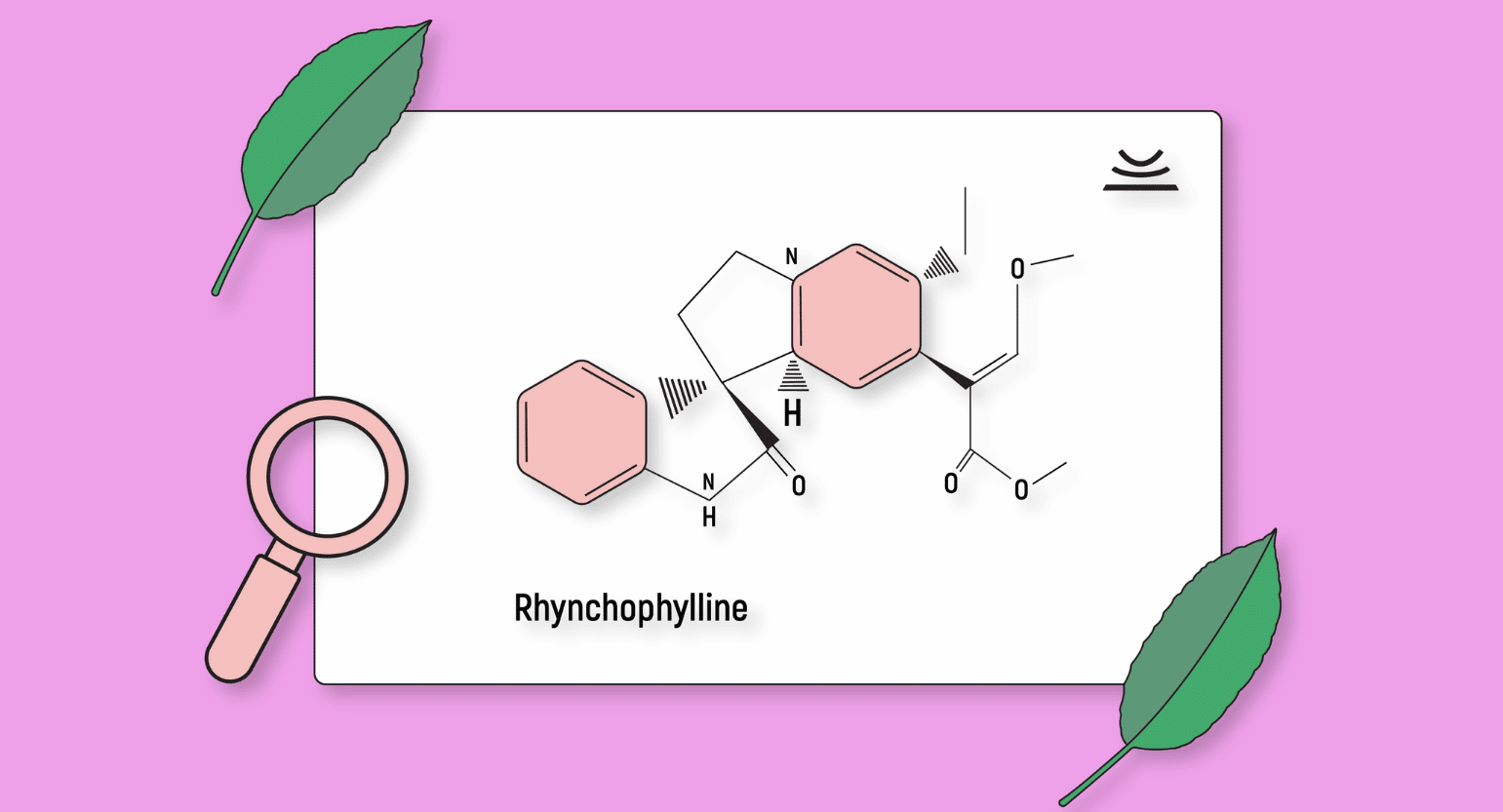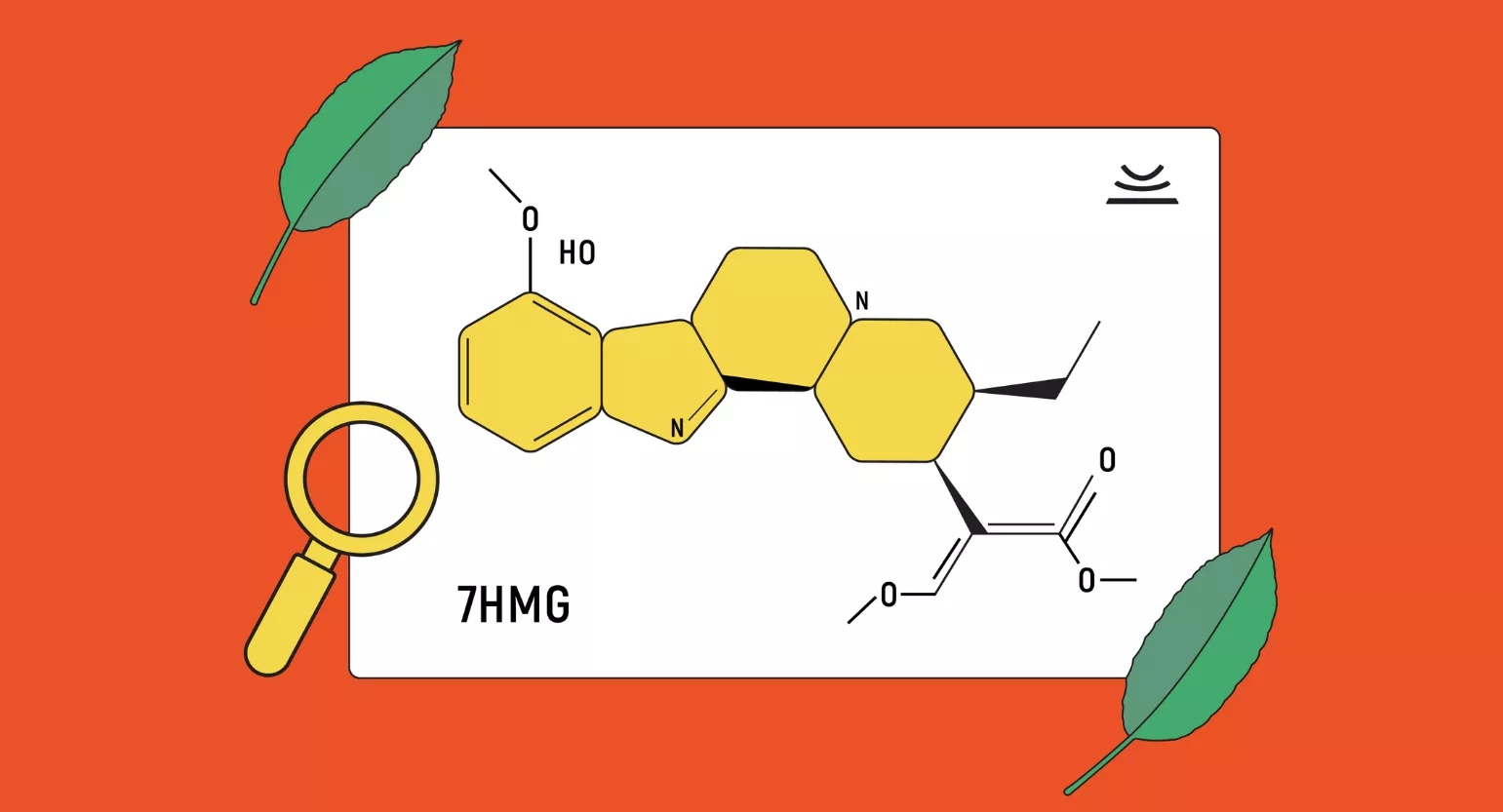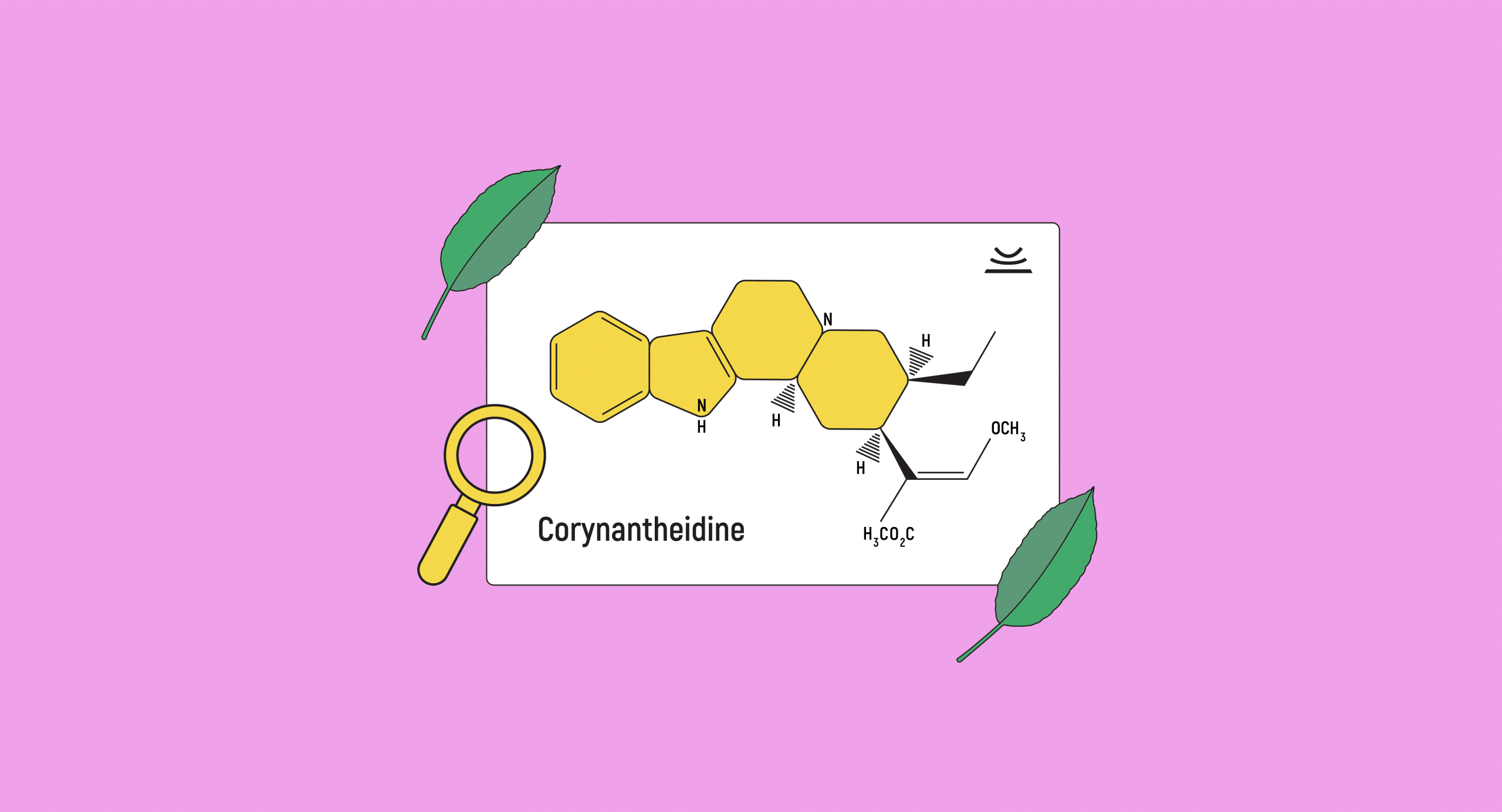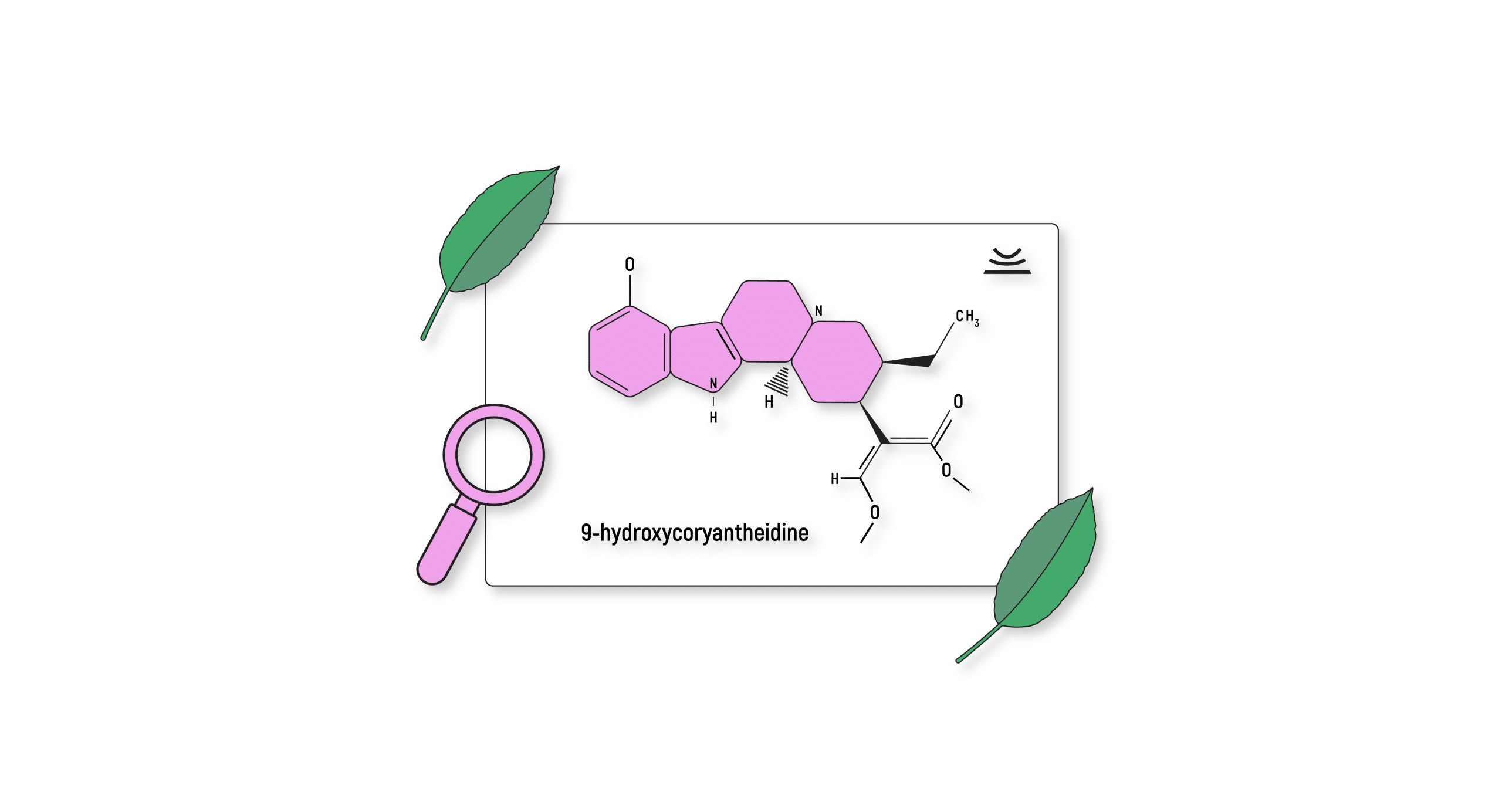What Is Rhynchophylline?
Rhynchophylline is one of the dozens of alkaloids produced by the kratom plant, Mitragyna speciosa. Alkaloids are nitrogenous compounds that, when ingested, interact with the body’s systems and receptors to produce a physiological effect. It appears in minute quantities in kratom, so it’s considered a minor alkaloid.
Where Does Rhynchophylline Come From?
Rhynchophylline appears in the kratom tree’s leaves and in other species in the Rubiaceae family. Alkaloids are organic and possibly produced by plants to defend against herbivores or insects. They typically taste bitter and are believed to have a distinct odor that could ward off pests. However, the exact purpose of alkaloids like rhynchophylline is still unknown.
Which Kratom Strains Are Highest in Rhynchophylline?
Much less is known about rhynchophylline than the major alkaloids, so we don’t yet know which kratom strains have higher concentrations of it. However, it is chemically similar to mitragynine, so it’s possible that strains with high mitragynine levels also contain higher rhynchophylline levels.
If that is the case, then strains like White Borneo, White Maeng Da, and White Indo should provide above-average levels of this minor alkaloid. White-vein kratom strains, in general, have higher levels of mitragynine, so these are more likely to provide a higher volume of rhynchophylline as well. Red-vein strains are likely to be the lowest in rhynchophylline, and green-vein strains should contain moderate amounts.

What Does Rhynchophylline Do & How Does It Work?
Rhynchophylline has quite a few effects on the body when consumed. Namely, it can help users fall asleep more quickly and stay asleep longer; it has been shown to reduce blood pressure and has neuroprotective qualities.
Sleep Aid
Although minimal research has been done on humans, some studies suggest that rhynchophylline can function as a sleep aid. The alkaloid interacts with several different sets of receptors in the body, including N-methyl-d-aspartate receptors and tyrosine kinase receptors; it also affects ion channels [1]. All of these systems in the body play a role in how we fall and stay asleep, so rhynchophylline can be helpful as a sleep aid.

Blood Pressure Reducer
Perhaps the most valuable effect of rhynchophylline is that it can function as a treatment for hypertension. Its hypotensive potential was discovered in the 1970s and attributed to its ability to act as a calcium channel blocker. Blood pressure medications work the same way, suggesting that rhynchophylline has some place in medicine as a treatment for high blood pressure.
Neuroprotectant
Another promising effect of consuming rhynchophylline is that it functions as a neuroprotectant. Early research suggests that it can serve to protect both the cardiovascular system and the central nervous system, showing promise as a treatment or preventative measure for ailments like heart disease, Alzheimer’s disease, Huntington’s disease, Parkinson’s disease, and more [2].

What Other Plants Contain Rhynchophylline?
Kratom is one of the leading natural sources of rhynchophylline, although some other plants in the Rubiaceae family contain the compound. Namely, two varieties of the herb cat’s claw — Uncaria rhynchophylla and Uncaria tomentosa — are also known to produce rhynchophylline naturally.
Is Rhynchophylline an Opiate?
No, rhynchophylline is not an opiate, nor are any of the alkaloids contained within the kratom plant. Some of kratom’s alkaloids interact with the body’s opioid receptors and are sometimes mistaken for opiates, but rhynchophylline does not bind to these receptors.
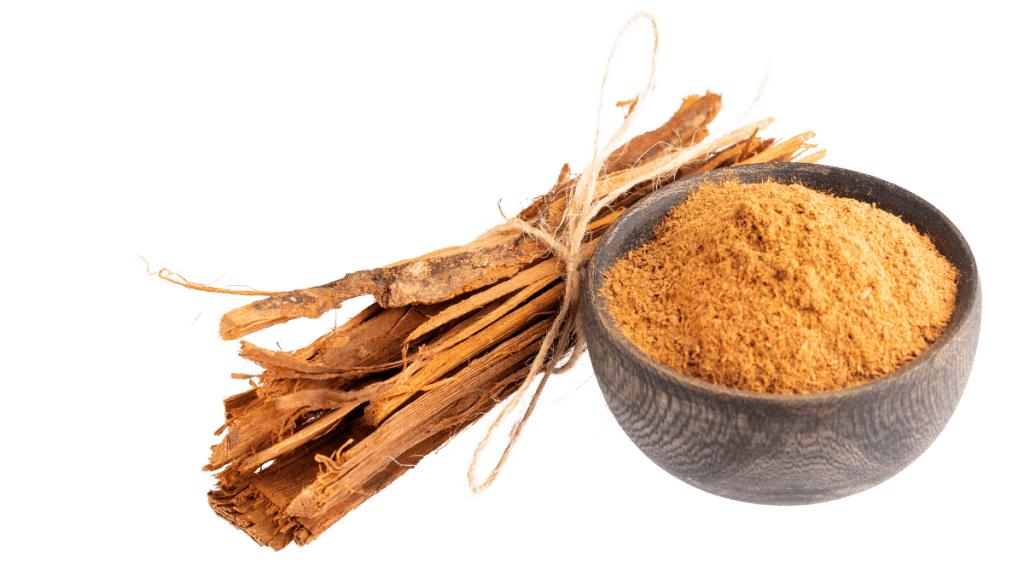
Is Rhynchophylline Safe?
There’s minimal clinical research regarding the safety of consuming rhynchophylline, so it’s difficult to say with certainty exactly how safe this compound is. However, most experts agree that consuming kratom is relatively safe. Since kratom is a source of rhynchophylline, it’s reasonable to assume that at least the small quantities of this compound found in kratom are also safe.
Side Effects of Rhynchophylline
Again, the lack of research on consuming rhynchophylline as a standalone compound is lacking, so it’s difficult to say what the side effects of this alkaloid are. However, since most individuals take rhynchophylline by consuming kratom powder, it’s worthwhile to discuss kratom’s side effects.
The most significant possible side effect is addiction. Kratom has a physiological effect, and any compound that acts like this can be addicting. It’s important to know how habit-forming it can be and take measures to avoid addiction, like taking short tolerance breaks every week and longer ones every month.
Some additional side effects are listed below. Most of these appear to be more severe with larger doses, so taking low to moderate doses and maintaining a schedule for tolerance breaks is the best way to avoid these side effects.

How Much Rhynchophylline Should I Take?
Consuming rhynchophylline by itself isn’t a possibility at this time. Although this alkaloid is isolated from the leaves of the kratom tree, it isn’t available as a standalone compound. As such, the only dosage recommendation is for kratom powder.
Users looking for a stimulative and uplifting experience typically take between 1 and 3 grams of kratom powder.
Those who want mild relaxation and those looking for mild pain relief usually take between 3 and 6 grams. If you want relief from intense pain or help with insomnia, use between 6 and 8 grams of kratom powder.
How Long Do the Effects of Rhynchophylline Last?
Rhynchophylline doesn’t have noticeable effects for most users, so it’s challenging to say how long the alkaloid will persist in the body and provide the abovementioned effects. However, kratom’s effects usually last between one and three hours for smaller doses or between three and five hours for larger doses.

Wrapping Up: Rhynchophylline’s Potential in Modern Medicine
Rhynchophylline might take a back seat to the major kratom alkaloids as far as research goes, but it still shows promise and could prove to be a valuable tool in modern medicine. It can help naturally lower a user’s blood pressure, induce sleep, help the user stay asleep, and act as a neuroprotectant. However, more research is needed to substantiate these benefits and confirm the safety of the alkaloid.
- Ballester Roig, M. N., Leduc, T., Areal, C. C., & Mongrain, V. (2021). Cellular Effects of Rhynchophylline and Relevance to Sleep Regulation. Clocks & Sleep, 3(2).
- Geetha, R. G., & Ramachandran, S. (2021). Recent advances in the anti-inflammatory activity of plant-derived alkaloid rhynchophylline in neurological and cardiovascular diseases. Pharmaceutics, 13(8), 1170.

